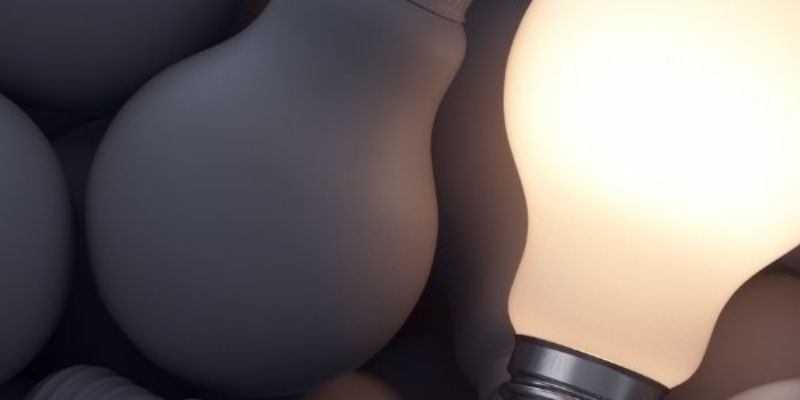How is light measured?
Lighting uses around 20% of the electricity generated in the UK and makes up 15% of domestic energy bills and with electricity bills continuing to rise it’s important to focus on ways to contain costs.
The move to LED technology will substantially reduce electricity costs. LED is a solid-state lighting technology (SSL). When voltage is applied to a semiconductor diode chip in the LED it produces light as electrons move around within its structure.
The technology has been around for decades in the electronics industry as indicator lights but rapid innovation has widened use to a range of environments at home and at work.
LEDs reduce energy consumption by up to 85% and their durable long life means that purchase costs are repaid many times over. If you buy a quality LED, you should be able to “fit and forget” for many, many years.
The colour emitted by LEDs is characterised by peak wavelength (lpk) and measured in nanometres (nm) and the 565 to 600 nm wavelength spectral region is where the sensitivity level of the human eye is highest.

An associated measurement for lighting is wattage. A kilowatt is 1000 watts and a Kilowatt hour (kWh) is a unit of energy for watts used over time. While wattage is no longer the primary means of assessing the quality and brightness of a lightbulb, it’s a useful way of initially comparing LED with older lighting bulbs.
So, for example, a 60W incandescent light used for 4 hours a day would use 0.24kWhs while a 9W LED light would only use 0.036kWhs in four hours but provide the same or better quality of light..
An essential metric for lighting is colour temperature. Measured in Kelvin (K), this describes how the light looks, often phrased as “warm”, “white”, and “cool”. Measurements vary from 1900K for very warm to 5000K+ for very cool lights.
Warm White lighting will appear golden and yellow in colour, similar to a burning candle while Natural White lighting appears much brighter and is often used in work environments. Cool White describes a colour temperature of 4000K+ which appears slightly blue.
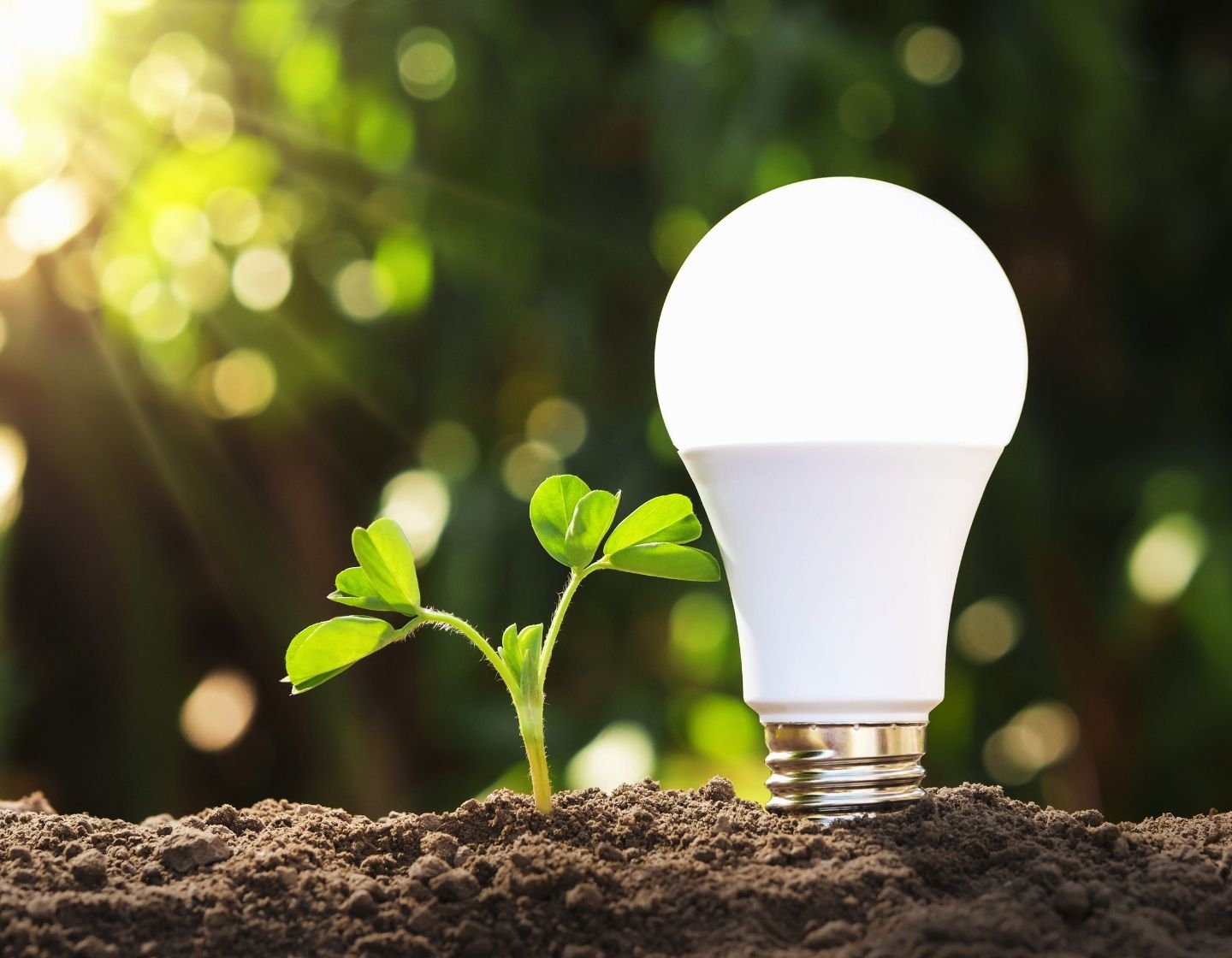
LEDs are made from gallium-based crystals that contain one or more additional materials such as phosphorous to produce a distinct colour. Different LED chip technologies emit light in specific regions of the visible light spectrum and produce different intensity levels.
Quality LEDs are the most effective replacement for energy-guzzling lights. They offer instant full light, unlike CFLs (Compact Fluorescent Lamps), have a longer lifespan, and quality of light remains high throughout use. CFLs by comparison degrade with use so quality of light is very poor by end of life. Lifespan of CFLs is also reduced with frequent on-off switching. CFLs also contain potentially harmful mercury and need to be disposed of safely.
LED lights also last much longer than halogen lights, which have an average lifespan between 2,000 and 6,000 hours. While that is up to three times as long as incandescent light bulbs, LEDs can last 100 times longer. Halogens work by heating up an element and are more wasteful in energy use. In fact, they are actually more efficient as heaters than lights. While you may still find them online, the government has banned sales of halogen bulbs but that’s no loss – LED is a far better option.
Incandescent bulbs were very inefficient – around 90% of the energy used by an incandescent lamp is dissipated at heat rather than light, which is the main reason why they have now been banned.

Dimmers and sensors
Homes can also reduce their energy consumption and carbon footprint from lighting by installing dimmer switches and automatic sensors which can offer up to 20% energy savings and lower bills as well as providing peace of mind of added security and comfort.
These lighting control solutions reduce wattage needed which means less electricity used and lower bills. They also Increase the lifetime of bulbs, so they won’t need replacing as often – saving more money. They also reduce carbon footprint, helping to protect the planet.
Dimmers can provide up to 20% savings while occupancy sensors can reduce energy usage by as much as 50%.
And smart lighting control systems make it easy to know the lights are only on when they’re needed, giving homes the full benefit of savings and stress-free security. The solutions are fully customisable to suit any lighting needs.
Smart lighting can be controlled via smartphone or tablet, from anywhere in the world and also through bespoke control devices, with programmable “scenes” that give detailed and focussed light settings for different rooms.
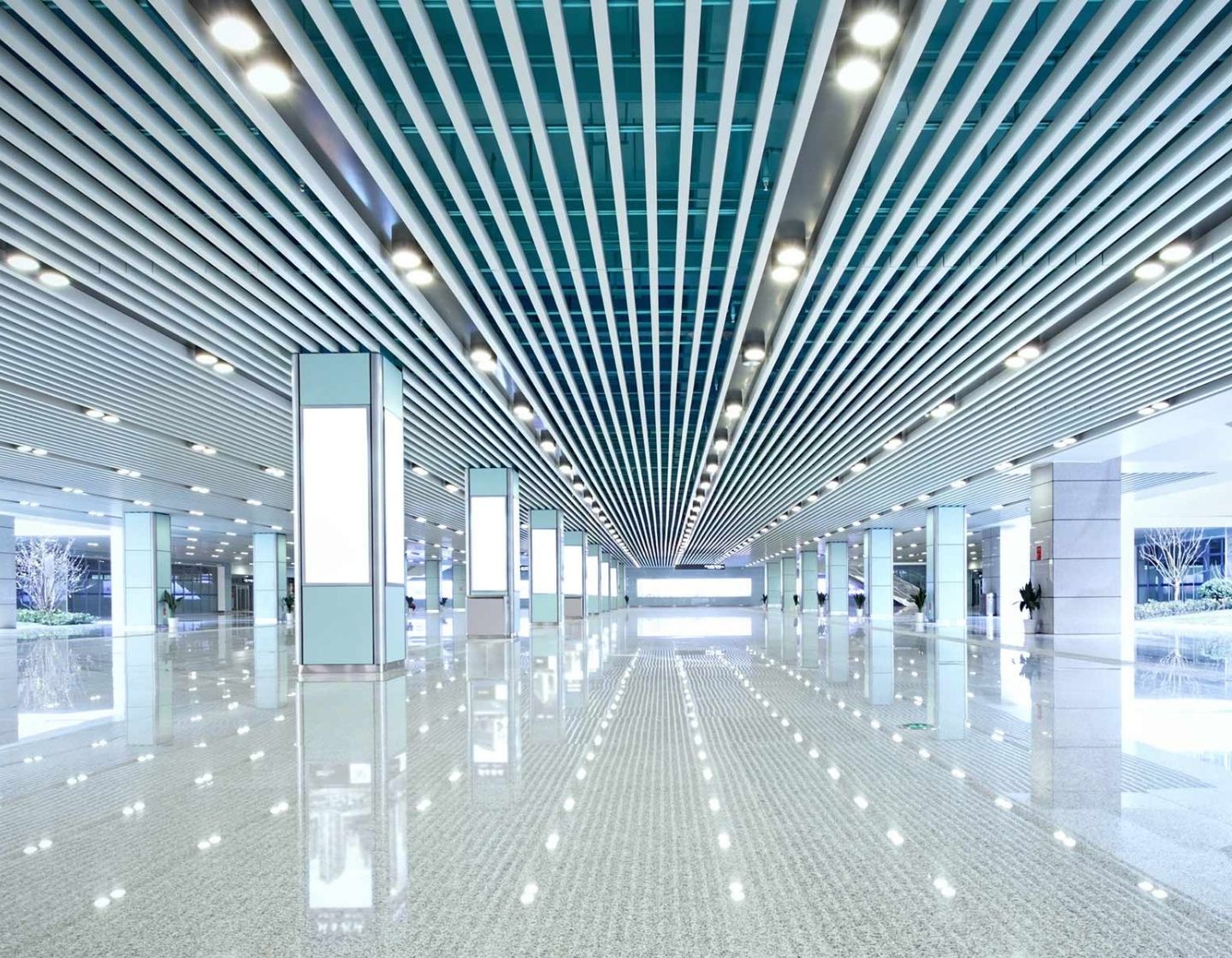
The measure of light
The recognised measurement of total light emitted from a source is a lumen (luminous flux) and the higher the lumens, the more light it emits. And efficacy can be roughly described as how energy efficient a light source is. Luminous efficacy is how much light you get out from the power you put in. It is a ratio of lumens (total light emitted) to power, for example, 90lm/W (90 lumens per watt).
The higher the number of lumens compared to the power, the greater the efficacy, and therefore the more energy efficient. So if you are looking for a light that’s going to be really energy efficient, choose the option with the highest lumens per watt.
Equally important is the Colour Rendering Index (CRI), a scale varying from 0 to 100 which describes how accurately colours appear under a light. The higher the number the better. For example, under a low CRI – below 60 – green objects can appear brown but a high CRI lamp will display the object more accurately as green.
High-quality LED lights above 95 CRI are excellent solutions for environments where rendering colours accurately is important, such as museums and galleries. And they make a significant difference when deployed in the home.
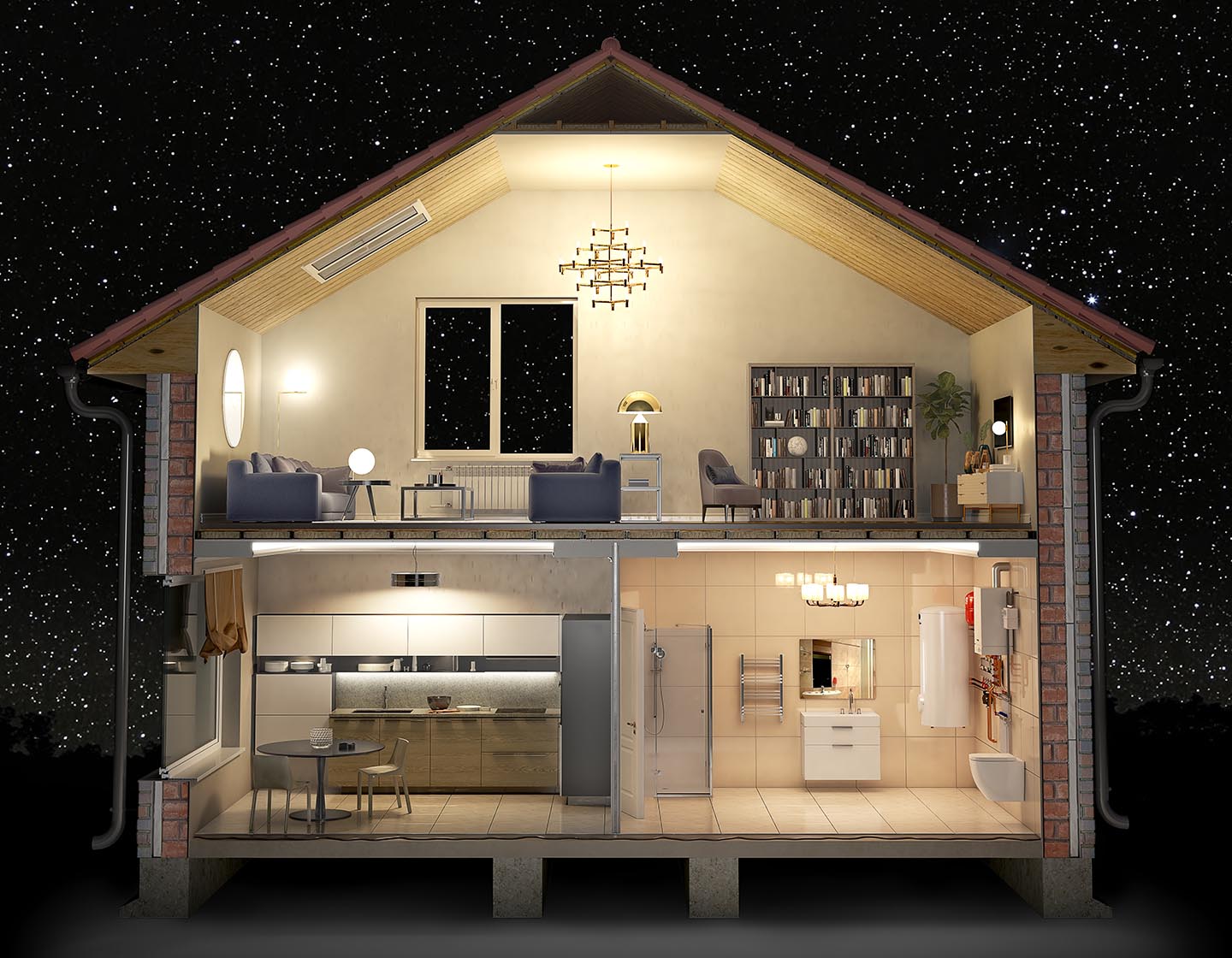
Waves and particles
Visible Light generally refers to electromagnetic radiation (waves) that can be detected by the human eye. It can also be described in terms of a stream of photons, massless packets of energy, each travelling with wavelike properties at the speed of light.
A photon is the smallest quantity (quantum) of energy which can be transported, and it was the realisation that light travelled in discrete quanta that was the origins of Quantum Theory.
Visible light is only a very narrow window of the electromagnetic spectrum, ranging from about 400nm for violet light through to 700nm for red light. In fact, we all not only reflect light, but also emit a visible light in very small quantities at levels that rise and fall with the day.
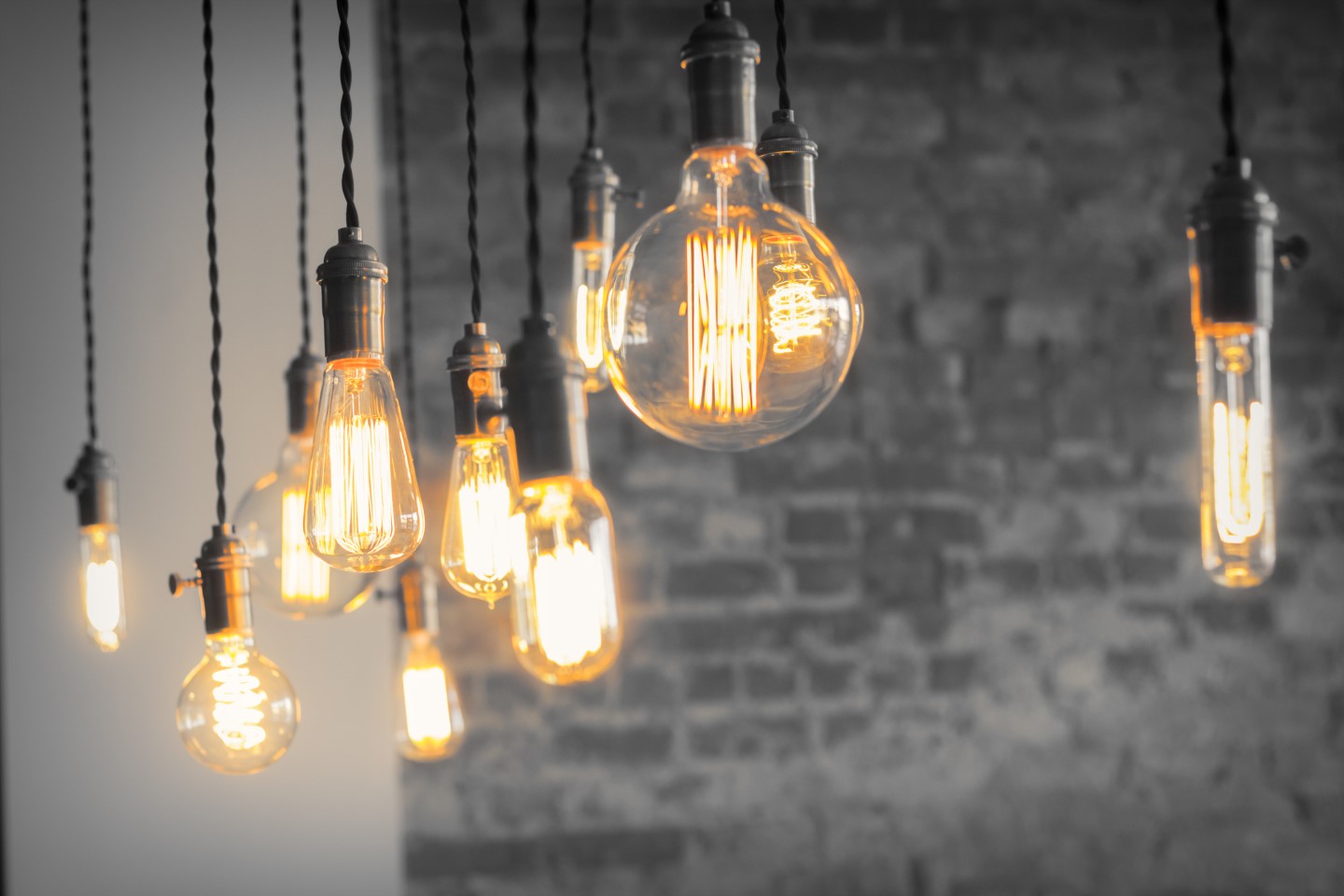
Carbon reduction
We have moved a long way from candles, wax, oils, wood and gas to electricity. This transformation has come at precisely the right moment as the mass adoption of LED lighting will play a big part in the decarbonisation strategies that should prevent the world from catastrophic overheating in the next 100 years.

